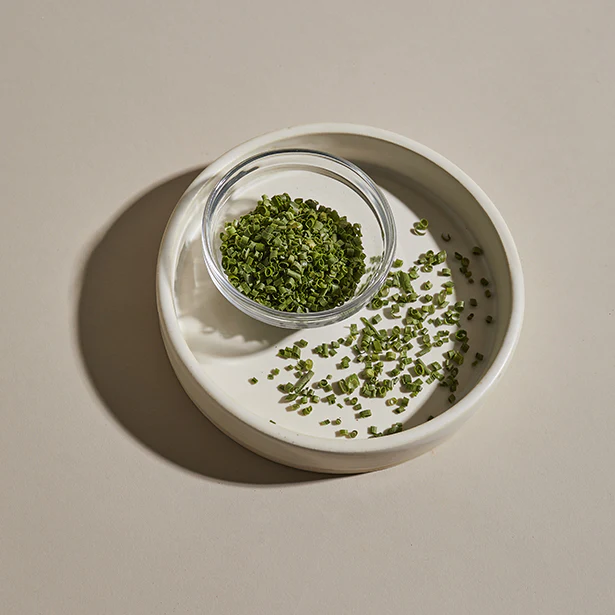Are you tired of bland, flavorless meals?
Many home cooks struggle with adding depth and complexity to their dishes, but chives can provide an easy solution.
Chives are an onion family member and are incredibly easy to grow in a home garden. They add a mild onion flavor to dishes and can be used in fresh and cooked ways.
This article will cover the basics of growing chives, including soil requirements and planting tips. We’ll also explore how to use chives in cooking, from adding them to omelets to using them in marinades and dressings.
Finally, we’ll provide some delicious chive recipes for your kitchen. Whether a seasoned chef or a beginner cook, chives are a fantastic herb to add to your repertoire.
What Are Chives?
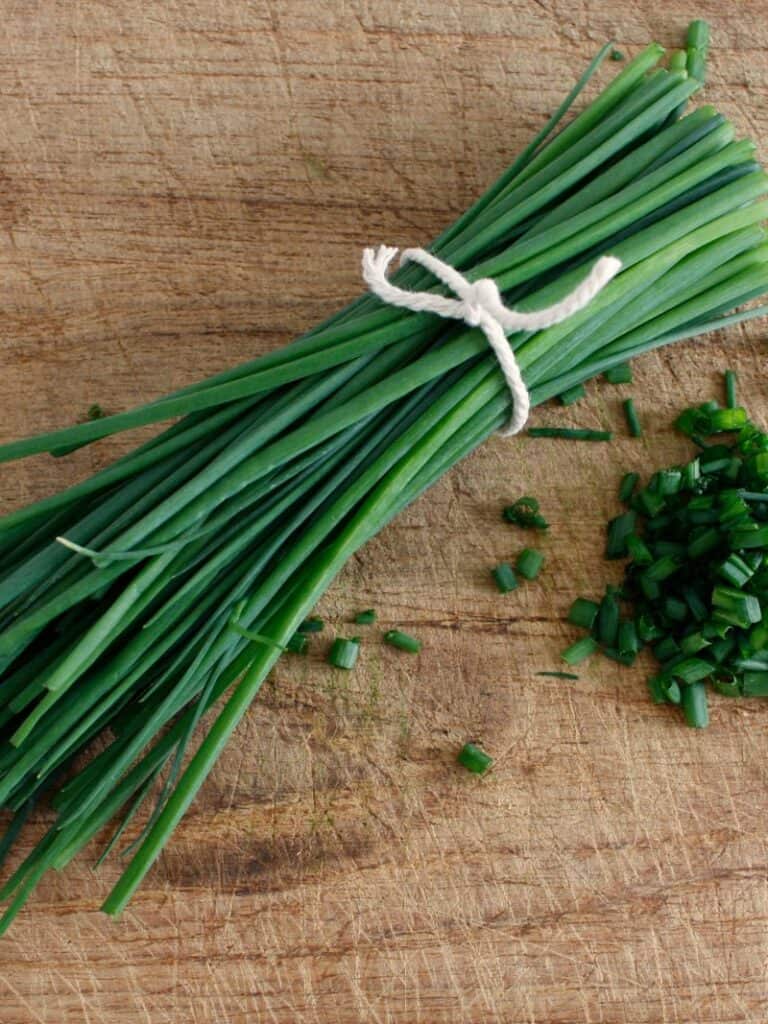
Chives are a type of herb that belongs to the onion family. They are native to Europe, Asia, and North America and are widely used in cooking for their mild onion flavor. Chives have long, thin green leaves that are hollow in the center and small, pink, or purple flowers that bloom in the spring and summer.
They are easy to grow and require full sun and rich, moist soil. If you want to get a head-start on planting, chives can be planted indoors about 6-8 weeks before the season’s last frost.
Rich soil leads to healthy chives with fuller plants and brighter green leaves. When harvesting chives, use scissors or a sharp knife to trim the ends.
Unlike onions and garlic, chives do not have an edible bulb; rather the entire long strand of chive is edible. Use fresh chives in recipes for added taste and texture, or you can also dry them for use later on.
Chives are incredibly versatile herbs with a variety of culinary uses. From salads to entrees and desserts, there is no shortage of recipes that feature this tasty herb!
Chives can be used raw for fresh flavor in addition to salads or sandwiches. They can be cooked with butter and cream sauces for fish dishes, add them to soups for extra texture, or sauté with some garlic as a side dish for poultry or pork dishes. The possibilities are endless!
Flavor Profile Of Chives: Mild, Onion-Like, And Slightly Sweet
Chives are an excellent option for those looking to add a mellow flavor to their dishes. They have a light onion flavor instead of being solid and pungent like onions, and the primary flavor of chives is an onion with a slight garlicky note.
Hints of garlic also complement this delicate onion flavor because it is related to other allium family plants such as leeks, onions, and garlic.
Since chives have a relatively mild flavor, experts recommend that they be added at the end of cooking to retain the fresh notes of their taste.
Health Benefits Of Chives: What You Need To Know
Chives are an excellent source of several essential micronutrients for healthy living. rich in flavonoid antioxidants, minerals, vitamins, and fiber, fresh chives can be a healthy addition to any meal.
For example, the herb is a good source of calcium for stronger bones, iron for a bolstered blood count, and potassium which has been found to support heart health.
Chives are also high in vitamin A, vitamin C (three and a half ounces of the herb meets the daily requirement), and folic acid, all of which have shown tremendous benefits to our health.
Additionally, they’ve been credited with specific medicinal uses such as treatment for high blood pressure and respiratory disorders and improvement with bowel movements.
Here are some health benefits of chives:
- Rich in vitamins A, C, and K
- It contains antioxidants that help protect cells from damage.
- It may help reduce inflammation in the body.
- It contains compounds that may have antibacterial properties.
- It may help regulate blood sugar levels.
- It can be a good source of dietary fiber.
- It may help improve digestion and prevent constipation.
- Low in calories and fat, making it a healthy addition to meals
How To Grow Chives
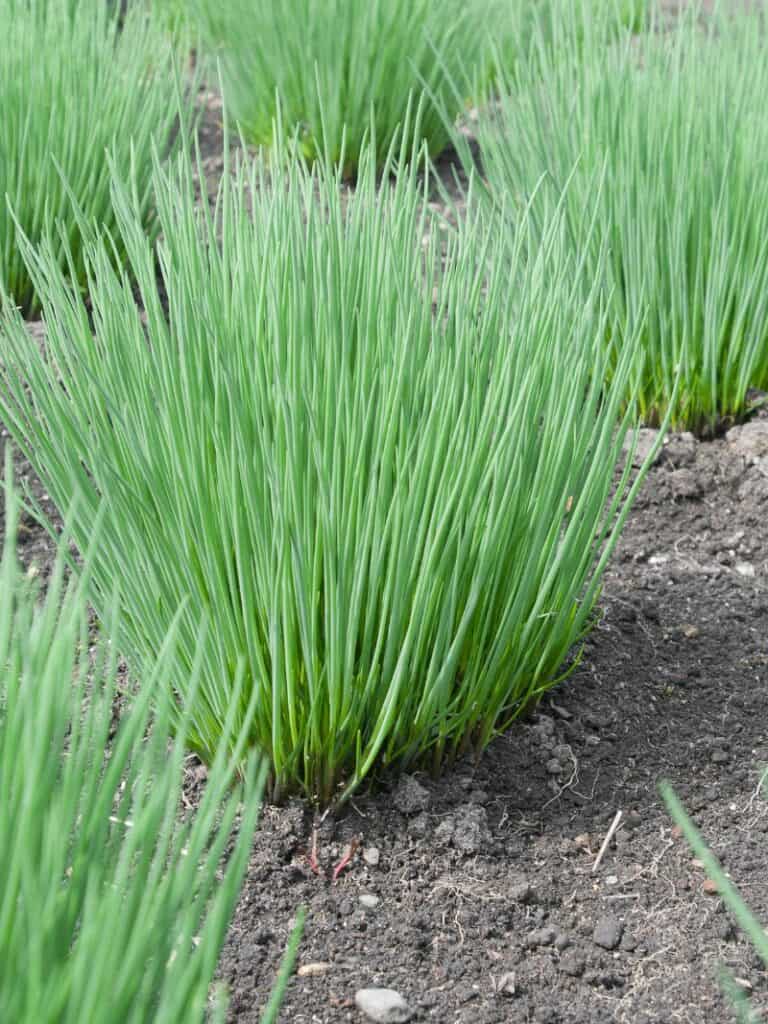
Growing chives is relatively easy and can be done in a home garden or pots.
Here are the basic steps for growing chives:
- Choose a location: Chives prefer well-drained soil and full sun to partial shade. They can be grown in garden beds, pots, or raised beds.
- Prepare the soil: Chives prefer soil that is rich in organic matter. Add compost or aged manure to the soil before planting.
- Plant the chives: Plant chive seeds or seedlings in the prepared soil, spacing them 6-8 inches apart. Use a pot at least 8 inches deep if planting in a pot.
- Water regularly: Chives must be watered regularly to keep the soil moist but not waterlogged.
- Fertilize: Chives do not require much fertilizer, but you can add a balanced fertilizer once or twice a year to encourage growth.
- Harvest the chives: Chives can be harvested throughout the growing season by snipping off the leaves with scissors. Be sure to leave at least 2 inches of growth so the plant can continue to grow.
Here are the growth stages of chives:
| Growth Stage | Days | What to Do |
|---|---|---|
| Germination | 1-10 | Keep soil moist and warm |
| Growth | 10-30 | Keep soil moist, provide sunlight, and thin seedlings |
| Maturity | 30-60 | Harvest chives and fertilize if desired |
| Flowering | 60-90 | Allow flowers to bloom or snip off, and continue to harvest chives. |
Following this timeline can help ensure healthy growth and a successful harvest of chives in your garden.
Following these simple steps, you can grow your chives and enjoy their delicious flavor.
How to Prepare Chives for Cooking
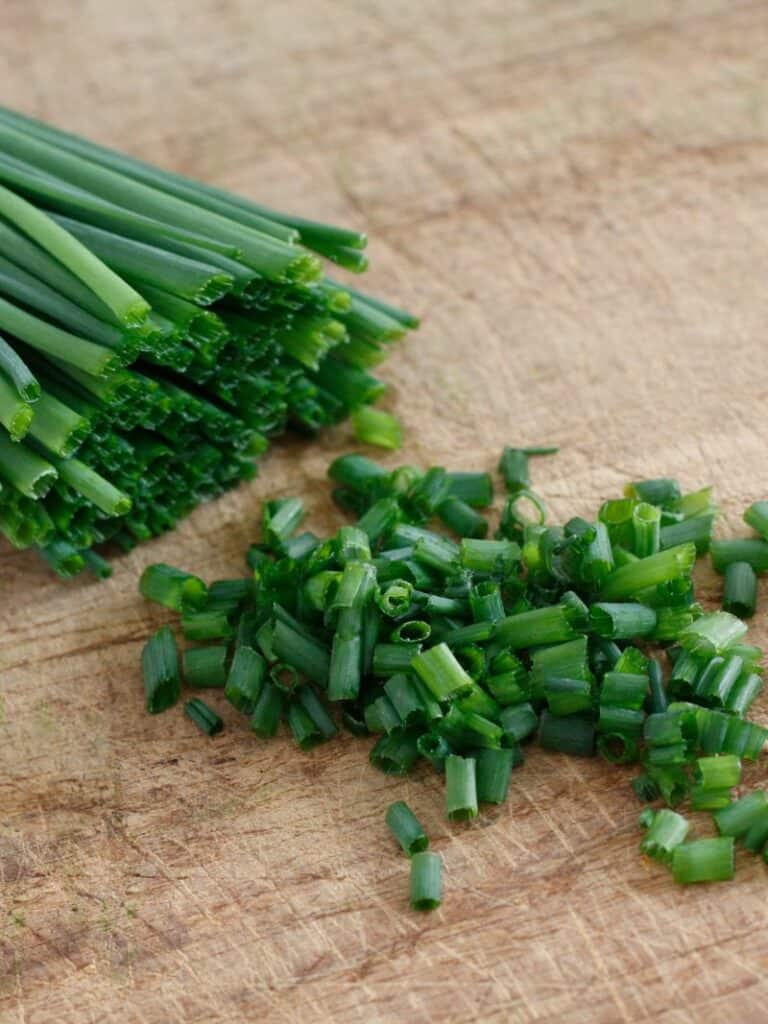
Chives are versatile herbs in various dishes, from salads to soups to omelets.
Here are some tips and techniques for preparing and using chives in your cooking:
Storing Chives
Fresh chives can be stored in the refrigerator for up to a week. To store, wrap them in a damp paper towel and place them in a plastic bag.
Chives can be frozen later by chopping them finely and placing them in an ice cube tray with water. Once frozen, transfer the chive cubes to a freezer bag.
Chopping Chives
To chop chives, first, remove any wilted or yellowed leaves. Then, use a sharp knife to chop the chives into small pieces. Chives can be chopped finely for dressings and dips, or left in longer pieces for garnish.
Cooking with Chives
Chives are best added to dishes at the end of cooking to preserve their delicate flavor. They can be used fresh or cooked and pair well with eggs, cheese, potatoes, and fish. Chives can be added to soups, stews, and sauces for a pop of flavor or used as a topping for baked potatoes or roasted vegetables.
Pairing Chives with Other Flavors
Chives pair well with other herbs like parsley, dill, and thyme, as well as with lemon and garlic. Try using chives in a lemon-dill sauce for fish or garlic-chive butter for steak.
Culinary Uses For Chives
Chives are a flavorful herb that can be used in many dishes. Here are some culinary uses for chives and recipes to try:
Salads
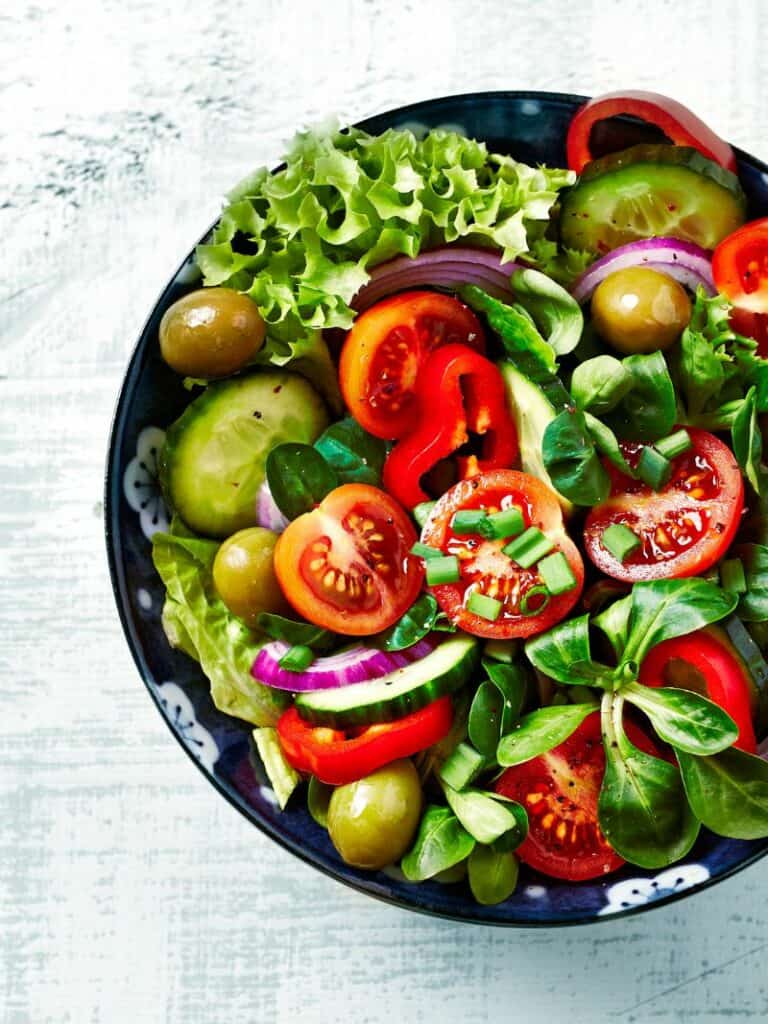
Chives can add a fresh, oniony flavor to salads. Try adding chopped chives to a simple green salad with a lemon vinaigrette.
Omelets

Chives are a classic omelet ingredient and can be added to the egg mixture or used as a garnish. Try making a chive and goat cheese omelet for a delicious breakfast.
Soups
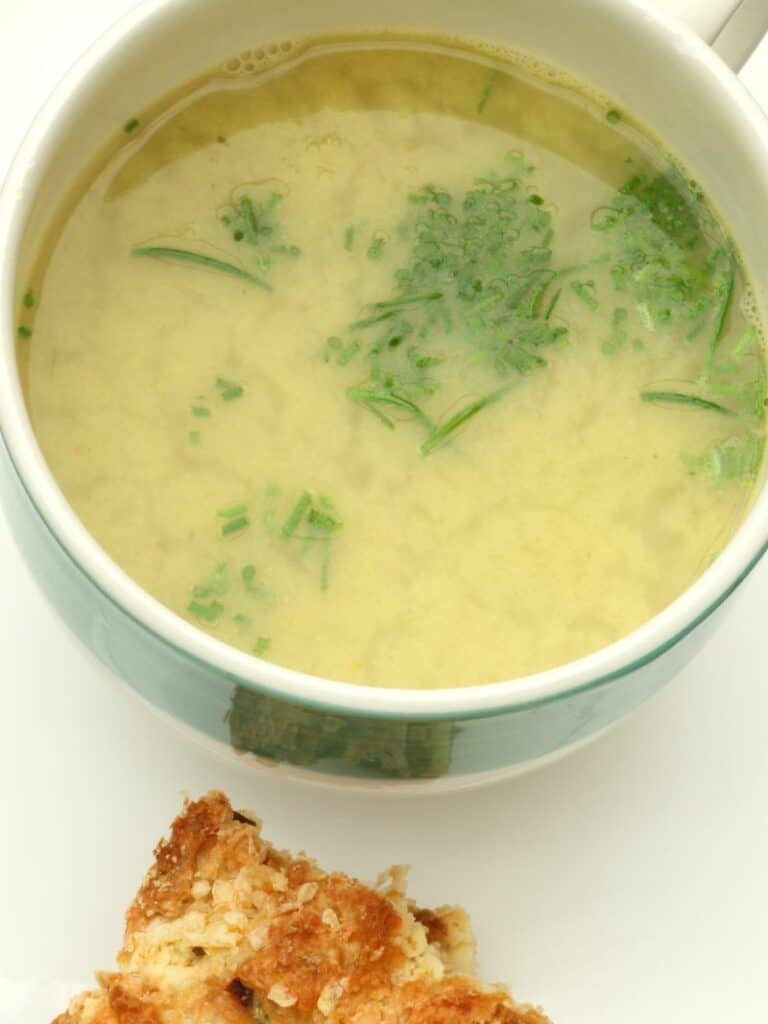
Chives can be added to soups and stews for a pop of flavor. Try adding chopped chives to potato soup or creamy mushroom soup.
Sauces
Chives can be used to make a flavorful sauce for fish or chicken. Try making a lemon-chive sauce for grilled salmon or a chive and white wine sauce for chicken.
Baked Potatoes

Chives are a classic topping for baked potatoes. Try topping a baked potato with sour cream and chopped chives for a simple and delicious meal.
Compound Butter
Chives can be mixed with butter to make a flavorful compound butter. Try mixing chopped chives with softened butter and serving with crusty bread.
Pasta
Chives can be used as a garnish for pasta dishes or added to the sauce for a burst of flavor. Try making creamy garlic and chive pasta for a delicious and easy dinner.
Where to Buy Chives?
Chives can be purchased fresh or dried at most grocery stores and supermarkets. They are often sold in small bunches in the produce section or plastic containers. Chives can also be purchased online from specialty food stores and herb suppliers.
If you want to grow your chives, seeds or seedlings can be purchased from garden centers or online suppliers. With their mild onion flavor and versatility in cooking, chives are a great herb to have on hand in your kitchen.
A cousin of the scallion, chives have a delicate onion flavor. Freeze-drying preserves their color, scent, and texture.
These Freeze Dried Chives are a perfect addition to clear broths, classic vinaigrettes, and deviled eggs.
Chives Substitutes
If you don’t have chives on hand, several herbs and other ingredients can be used as a substitute.
Here are some chives substitutes to consider:
Green onions or scallions
Green onions or scallions have a similar mild onion flavor to chives and can be used in place of chives in most recipes.
Shallots
Shallots are a type of onion that has a mild, sweet flavor. They can be chopped finely instead of chives in recipes that call for a subtle onion flavor.
Leeks
Leeks are milder members of the onion family that can be sliced thinly and used in place of chives. They have a slightly sweeter flavor than chives but can be used similarly.
Garlic
While not a perfect substitute for chives, garlic can add a similar depth of flavor to dishes. Try using minced garlic instead of chives in recipes that call for a savory, oniony flavor.
Dried herbs
If you don’t have fresh chives, dried herbs like dried parsley or dried dill can be used in their place. Remember that dried herbs have a more concentrated flavor than fresh herbs, so you may need to adjust the amount you use in a recipe.


